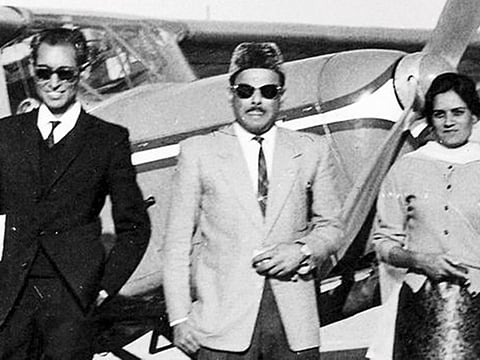Pakistan’s legendary Fly Girl is no more
Shukriya Khanum, Pakistan’s first female commercial pilot, dies

Islamabad: More than 50 years after Shukriya Khanum broke barriers, becoming Pakistan’s first woman to earn a pilot’s license, there are still very few women who choose a career as challenging as flying.
The woman who inspired many Pakistani men and women to earn their wings has quietly passed away. The 82-year-old died on May 14 in the city of Lahore after suffering from cancer for years.
Khanum, Pakistan’s legendary fly girl, became the first pilot of national carrier Pakistan International Airlines (PIA) at a time when aviation was largely a male-dominated industry and female pilots were not permitted to fly commercial planes.
She joined the exciting field of aviation after earning her commercial pilot license (CPL) in July 1959 which she pursued following her graduation from the city’s Government College. Surprisingly, it took 30 years before another Pakistani woman followed in her footsteps. Khanum, however, paved the way for generations of female pilots, including fighter pilots.
Khanum made history when she became Pakistan’s first female commercial pilot license holder and joined PIA.
After achieving the first landmark, Khanum realised the restrictions placed by society on women, when she learned that the airline, in its early days, did not permit female pilots to fly commercial planes.
The fly girl was simply unstoppable. Instead of being disheartened, she accepted the job of flight instructor in PIA’s training centre, where she taught young cadets. She also took flying enthusiasts on joyrides at Karachi Flying Club to achieve her dream of spending time among the clouds.
Pakistani society became more conservative in the late 1970s when martial law was enforced and the military government of General Zia ul-Haq took over. Zia was against “the idea of a woman flying with a man together in the cockpit” and Khanum was barred from flying. She was then limited to work only as a ground instructor, a move that stunned her.
Khanum’s nephew and known Pakistani TV anchor Dr Shahid Masood, recalls his aunt telling him: “I work with these men. Some of them are my students, others are colleagues and I spend a lot of time with them, so what is wrong in flying together? And there are stewardesses on board as well, so are they going to stop them, too?”
However, Khanum was not the only one who became the victim of male chauvinism. Two other women pilots — Ayesha Rabia and Maliha Sami — faced similar discrimination after taking the pilot test in 1980. The two female pilots were later called by PIA to attend formal pilot training as the situation improved after the death of General Zia in 1989.
“For nine years I waited, because rules did not allow women to fly,” Rabia was quoted as saying. Rabia became the first female Pakistani captain of a commercial scheduled flight in 2005. Sami flew her first flight as first officer in 1990, the day before Rabia flew hers.
It must have been a dream come true for Pakistan’s fly girl when Captain Ayesha Rabia Naveed and her all-women crew flew a PIA Fokker plane from Islamabad to Lahore in 2006.
Recalling the time when she met Khanum in Karachi, she said advised her “to focus on professionalism and never let anybody think that because you are a woman you cannot do that”.
In one of Shukriya Khanum’s famous photos, she is seen standing next to a plane with Qaiser Ansari, who was working as a flight instructor at a flying club in Rawalpindi,
Qaiser Ansari also recalled her as a brave woman. “Shukriya throughout her life tried her best to prove that girls can do anything” he said, adding that PIA had failed to give her the status that she deserved.
Khanum’s nephew, Dr Masood also remembered his aunt as a “brave and bold woman” who “belonged to an age that was more enlightened.”
Kaiser Tufail, a retired fighter pilot of the Pakistan Air Force and better-known as an aviation historian who spent 20 years of his life flying, was also inspired by Pakistan’s first woman pilot.
Remembering his memorable short flight in a Cessna 150 at the Karachi Flying Club in 1966, he says: “I thank her profusely for the inspiration she had provided which eventually led to a thrilling flying career in the Pakistan Air Force. Years later, all I can do is call out belatedly: Thank you, fly girl!”
Pakistan’s fly girl, Khanum, may not have earned the admiration and status she deserved, but Khanum’s imprint on Pakistan’s aviation history lives on.
Sign up for the Daily Briefing
Get the latest news and updates straight to your inbox



